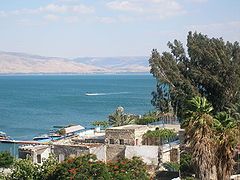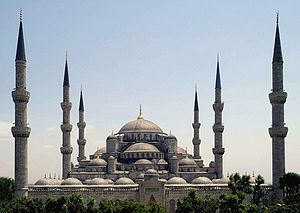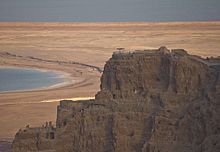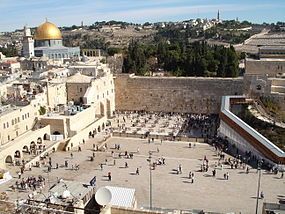Lessons for CA from my Middle East trip
by Katy Grimes | February 27, 2013 9:23 am
Feb. 27, 2013
By Katy Grimes
 [1]
[1]
I just returned from a trip to the Middle East, and managed to pack several thousand years of history into three weeks. Against the warnings and concerns of many friends, my husband and I, and another couple, traveled to Istanbul, Turkey, then to Israel, where we rented a car and drove around the country.
I felt safer in Israel and Istanbul than I do in Los Angeles or San Francisco.
The people
No tour groups, no tour buses and no tourist restaurants for us. We thoroughly researched the countries ahead of the trip, and decided to immerse ourselves as much as we could in a short time. We ate at local restaurants, visited local bars, and hung out in local coffee houses, while sightseeing, meeting local people, and learning about the countries.
I think the most compelling part of any trip is always the people. The Turkish people were kind, welcoming and engaging. They openly shared much about the state of their country, their economy, their politics, culture, how they live, as well as their history. And many were chagrined that we were heading to Israel next.
The Turkish people are workers, industrious, fit, healthy and trim. There do not appear to be excesses in their lives. The young work, and the country’s older people still work.
Israelis were also friendly, but in a different way. They are much more serious given the threat they live with. Israelis also work hard. The welfare system in Israel is different from America’s because it is primarily for the tens of thousands of ultra-orthodox Jewish men who spend their days studying the Torah instead of working. But there is growing disdain and disenchantment among the working people of Israel because the highly subsidized ultra-orthodox Jewish class is growing, and draining precious resources.
Israeli’s openly expressed frustration with leaders who seem so willing to continue to give away Israeli land. They say that giving away Israeli land will not bring about peace.
It is evident in both Turkey and Israel that politicians have not imposed business-killing regulations. Someone with the imagination, work ethic and drive can still open a business without bureaucrats standing in their way.
We never saw “homeless” people as we see in America. There were a few beggars in Israel, but I never saw any in Istanbul.
However, there were plenty of clever shop owners, and operators of tiny bodegas, who make money very creatively when hawking their wares along the streets and alleys of the cities. These people work all hours of the day and night, without union rules and regulations. They know that work means income.
Real conservation
In Turkey and Israel, I observed sincere, effective energy conservation. Hotels have energy saving devices in the guest rooms which require the room card to be inserted in order for the electricity to work. When the guest leaves and removes the card, all of the electricity shuts off. Businesses use this system as well.
The people of Istanbul and Israel drive small cars, scooters and motorbikes. I saw one Escalade SUV during my trip. The diesel Jeep Cherokee is a popular SUV option, and one not available yet in the United States, although it is expected soon[2].
The primary car manufacturers I saw were smaller models of Hyundai, Toyota, Skoda, Audi, Opel, Ford, Chevy, Pugeot and Kia.
Istanbul
History in this part of the world has been violent, dangerous and fatal for many civilizations.
 [3]
[3]
In Istanbul, we saw evidence of the earliest cave dwellers during the Stone Age, Copper Age and Bronze Age. We saw artifacts and ruins from 676 BC, when Greek settlers arrived on the coast of Turkey; through Alexander the Great, Roman and Byzantine Emperors Septimius, Constantine, Theodosius, Justinian, Romanus Diogenes; and the fall of the Roman Empire. Then the Crusaders tore most of Istanbul down, but left their cross marks on buildings all over the city. The Ottoman Empire was ushered in, with Mehmet the Conqueror and Topkapi Palace. The building of the Blue Mosque and many of the 169 mosques in Istanbul took place from 1300 through 1567, when the “New Mosque” was completed.
The call-to-prayer at the mosques five times daily was interesting. Beginning at daybreak, the first call-to-prayer usually woke us up. We discovered that only about 12 percent of Muslims in Istanbul are observant.
We took a boat down the Bosphorus Strait to the Sea of Marmara. The Bosphorus was an important trade route in ancient Turkey, and many settlements along the river were established because of it.
Israel
Israel provided as much history. Located between Egypt, Jordan, Syria and Lebanon, along the Mediterranean Sea, we arrived at Israel’s primary airport, Ben Gurion in Tel Aviv. We rented a car and drove along the western coast from Tel Aviv to Caesarea, Netayna, up North through Haifa to Safed, near the Lebanon border, to the Sea of Galilee, the Golan Heights, and Tiberias, back down through the Jezreel Valley and the West Bank, to Jerusalem, where we stayed five days. Then we drove east toward Jordan to the Dead Sea and Masada, the first site Herod the Great fortified after he gained control of his kingdom in 35 BC. Then it was back to modern Tel Aviv.
 [4]
[4]
Tel Aviv was an amazing contrast to Safed and Jerusalem, where mostly observant Jews and Christians lived. Tel Aviv is a much more secular and modern city, built only 100 years ago. While much of the oldest buildings are crumbling, the new construction was astounding. I counted 20 cranes working on different high-rise construction projects in the downtown area.
In Israel, we saw evidence of cave dwellers from 12,000 BC. In 3200 BC, Canaanite tribes established well-fortified cities, and by 1000 BC Jerusalem became the capital of the tribes. King Solomon built the first Temple in 960 BC. But by 586 BC, Babylonians destroyed it. Future Temples were desecrated and destroyed, but many were rebuilt.
By 63 BC, the Romans invaded and captured Jerusalem, but also rebuilt much of the Holy City, including the new Temple, of which only the Western Wall remains today.
We walked along the footsteps of the Via Dolorosa. We walked the Stations of the Cross, the steps of the Crucifixion of Jesus in Jerusalem. East stop commemorates the events during the torture, sentencing, carrying of the cross, crucifixion, death and burial of Jesus. The final stations of the crucifixion and burial are within the Church of the Holy Sepulcher. We spent several hours in the Church built where Jesus was crucified, prepared for burial, entombed, and resurrected.
At the Shrine of the Book, we saw the Dead Sea Scrolls, the 972 texts first discovered in 1946 on the shore of the Dead Sea that consist of manuscripts from what is now known as the Hebrew Bible and other biblical documents.
 [5]
[5]
Inside the Old City, we spent days visiting the Western Wall, the Arab quarter, the Jewish Quarter, the Armenian Quarter and the Tower of David.
The elements of Ottoman, Crusader and Byzantine architecture are all still evident, and amazing to see and touch.
I will remember the people. They know the history of their countries, and are painfully aware of current threats — unlike Americans, who seem defiantly determined to repeat the mistakes and ugliest parts of history.
- [Image]: http://www.calwatchdog.com/2013/02/27/lessons-for-ca-from-my-middle-east-trip/240px-sea_of_galilee_2008/
- expected soon: http://www.foxnews.com/leisure/2013/01/14/2014-jeep-grand-cherokee-diesel-gets-30-mpg/
- [Image]: http://www.calwatchdog.com/2013/02/27/lessons-for-ca-from-my-middle-east-trip/300px-sultan_ahmed_mosque_istanbul_turkey_retouched/
- [Image]: http://www.calwatchdog.com/2013/02/27/lessons-for-ca-from-my-middle-east-trip/220px-pikiwiki_israel_10475_herod_palace_at_masada_/
- [Image]: http://www.calwatchdog.com/2013/02/27/lessons-for-ca-from-my-middle-east-trip/285px-westernwall2/
Source URL: https://calwatchdog.com/2013/02/27/lessons-for-ca-from-my-middle-east-trip/